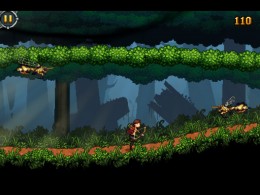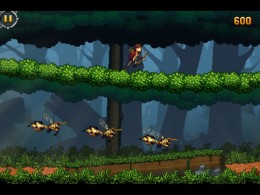![]() Work with me for a second. Forget that The Hunger Games: Girl on Fire has a connection to the Hunger Games fiction. Instead, let’s just look at is as if it is a normal, everyday product that isn’t being bankrolled by a major movie studio. Let’s do this because, even in this vacuum, it impresses. Provided the final build is as good as the one we’ve been paying, it’s the kind of game we’d recommend without pause: it’s conceptually solid, it has a fantastic look, and it brings some new ideas to a genre that’s hopelessly clotted.
Work with me for a second. Forget that The Hunger Games: Girl on Fire has a connection to the Hunger Games fiction. Instead, let’s just look at is as if it is a normal, everyday product that isn’t being bankrolled by a major movie studio. Let’s do this because, even in this vacuum, it impresses. Provided the final build is as good as the one we’ve been paying, it’s the kind of game we’d recommend without pause: it’s conceptually solid, it has a fantastic look, and it brings some new ideas to a genre that’s hopelessly clotted.
You could argue that Girl on Fire is a spiritual successor to Canabalt [$2.99]. It’s an endless runner that revolves around a daring escape, but it boasts some key points of iteration that change up the play in strong ways. For one, Girl on Fire boasts a regenerating health system. If you take a hit, you lose your momentum, but not the game. As a result, you get get married to sessions, and the overall runner experience doesn’t feel as hollow as it usually does.
More interestingly, Girl on Fire allows you to act on blockades. When one of the game’s huge human-sized hornets buzz into the picture, you can shoot it. There’s also an avoidance mechanic, too, that allows you to jump between the jungle world’s upper and lower tiers. Choosing when to kill and when to jump is a cool tactical layer, which brings choice to conflict. Do you jump when a conga line of hornets fly hurdle towards you, or do you stand your ground and pluck them off? When they fire back at you with their purple balls of doom-y doom, do you jump and take care of them or do you just try to avoid the confrontation altogether?
Solid controls compliment this action. Swipe to move between planes, press to aim your projectile bow weapon and fire. It’s all sharp, simple, and responsive, just like the 16-bit games that the art style and tone of the game have been modeled around. Playing this is like step back into a portal where gaming was purer and simpler.
Semi-Secret’s Adam Saltsman is one of the big independent developers attached to this project, so that’s probably why we feel the connection to Canabalt so strongly. Even if we could stop ourselves from the comparison, we’d still be high on Girl on Fire after our hour or so with it. We’ll be taking a much longer look at the final build when it hits iPhone and iPad tomorrow, so stay tuned.

